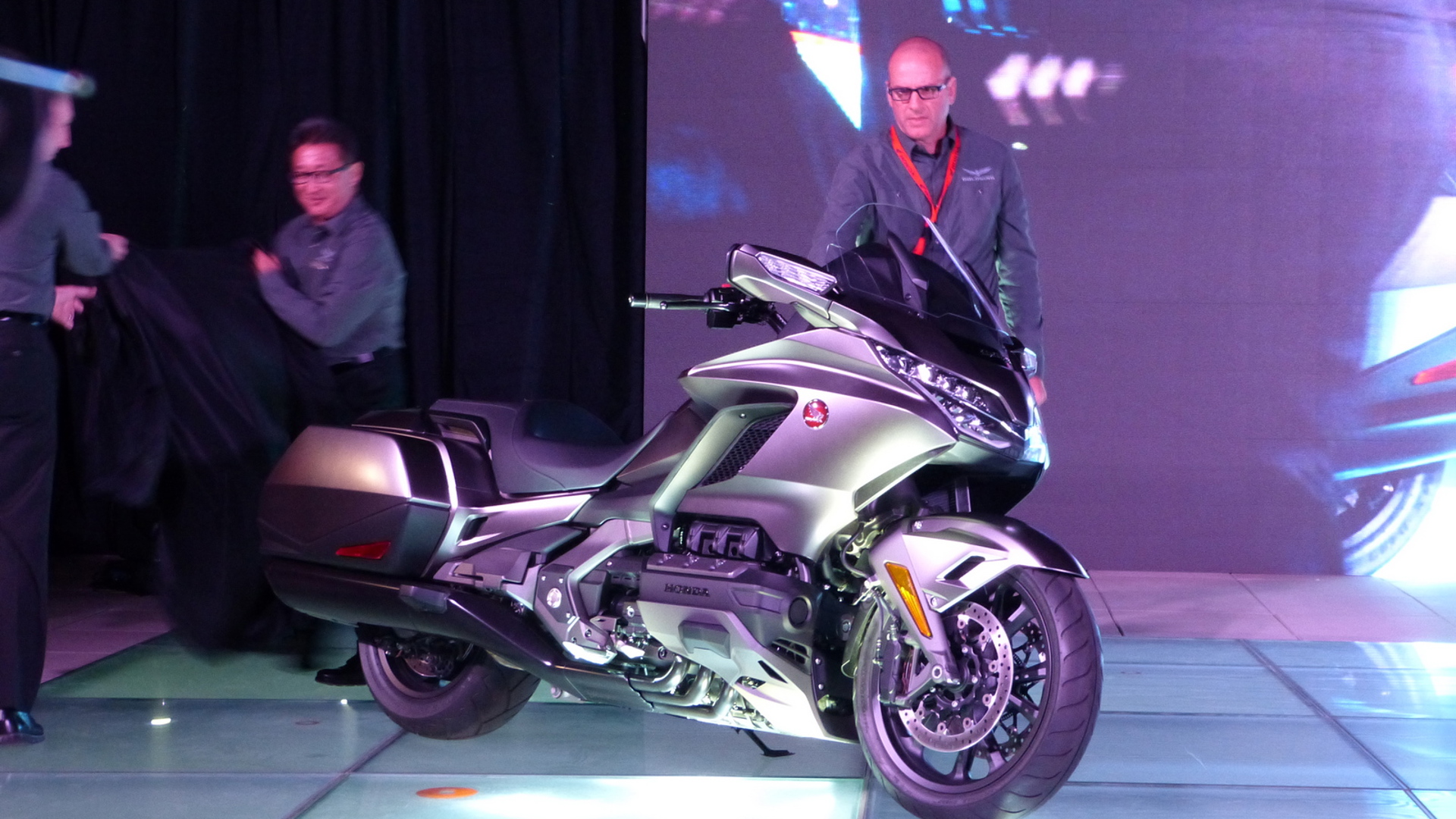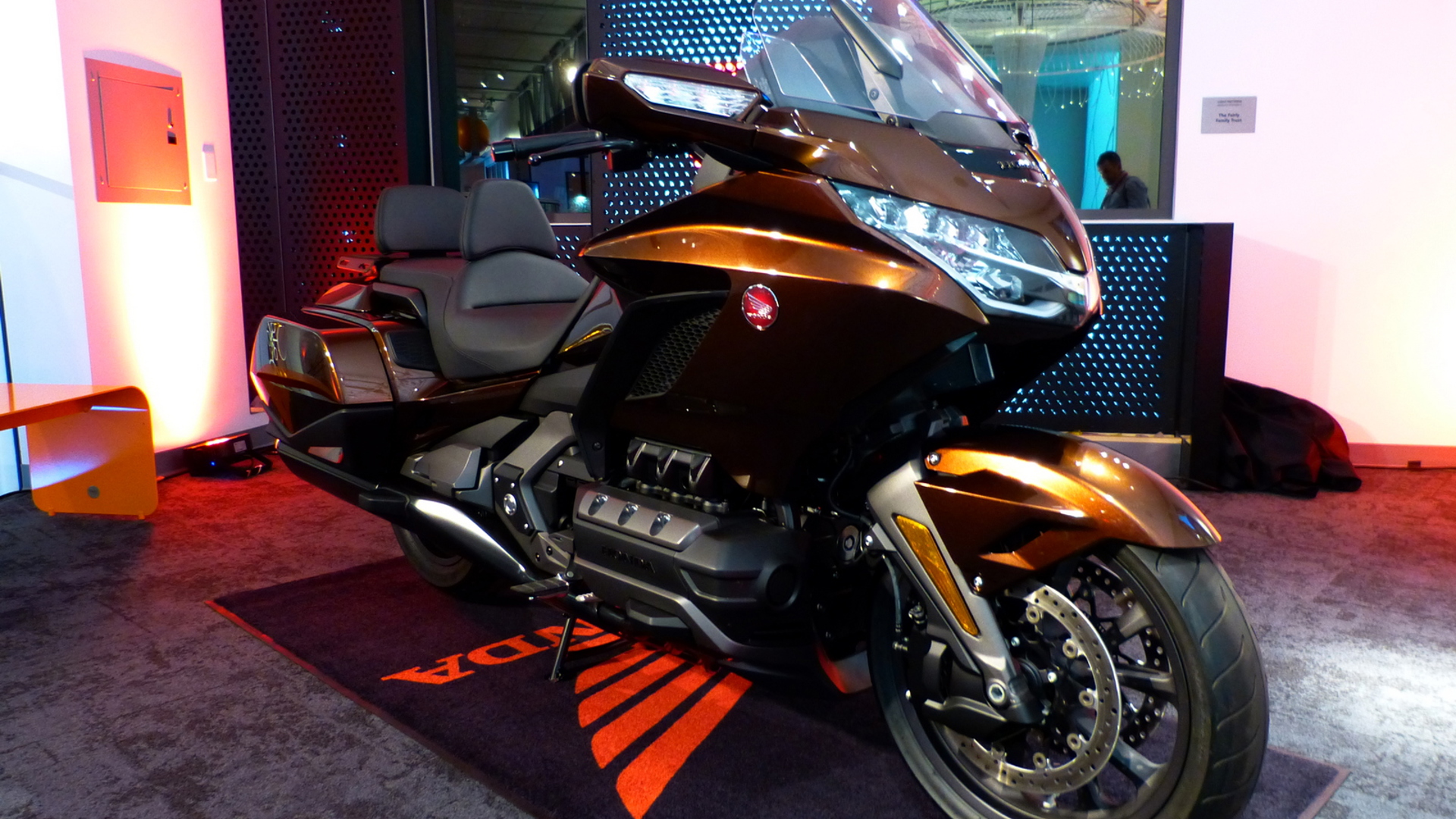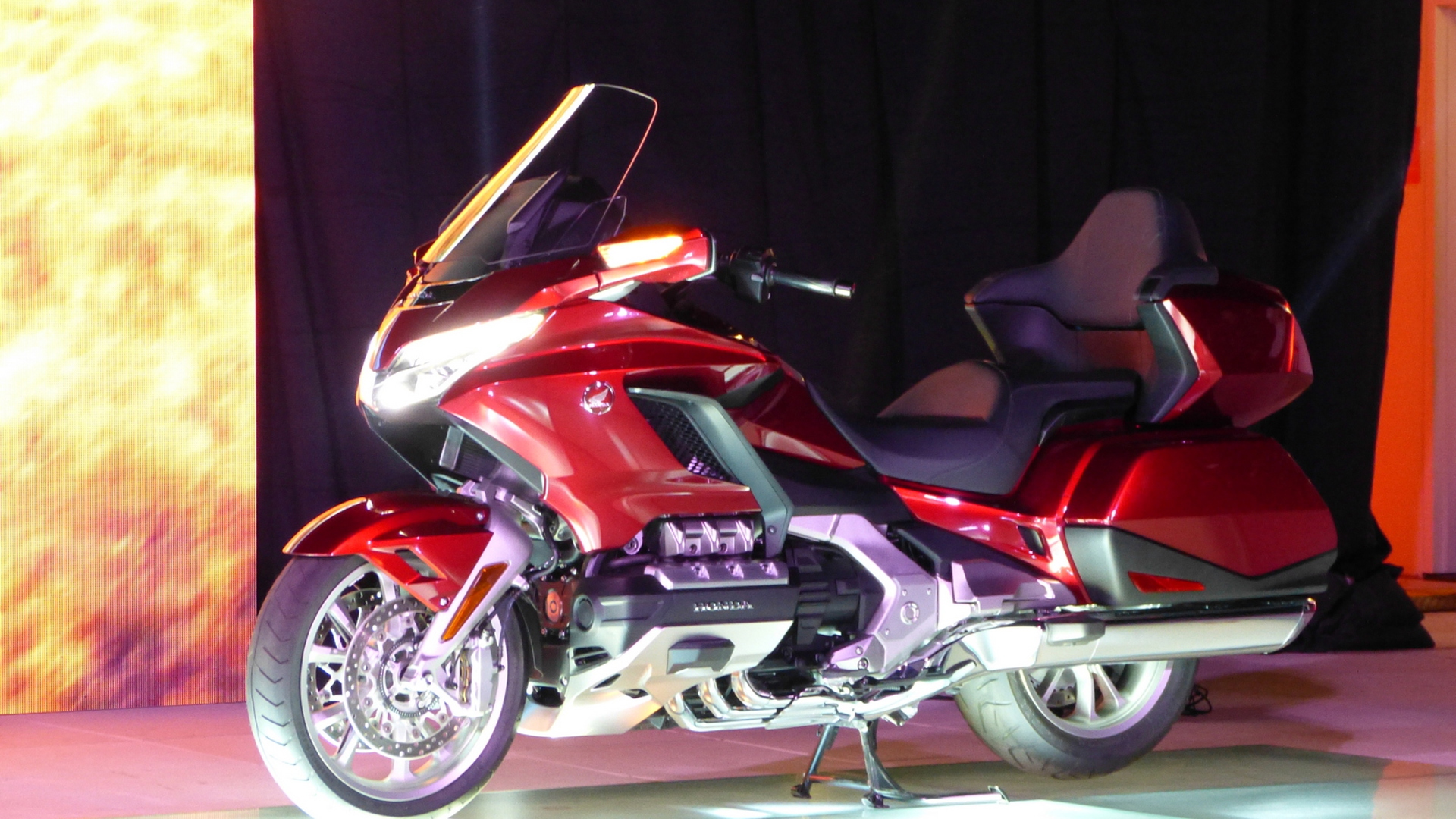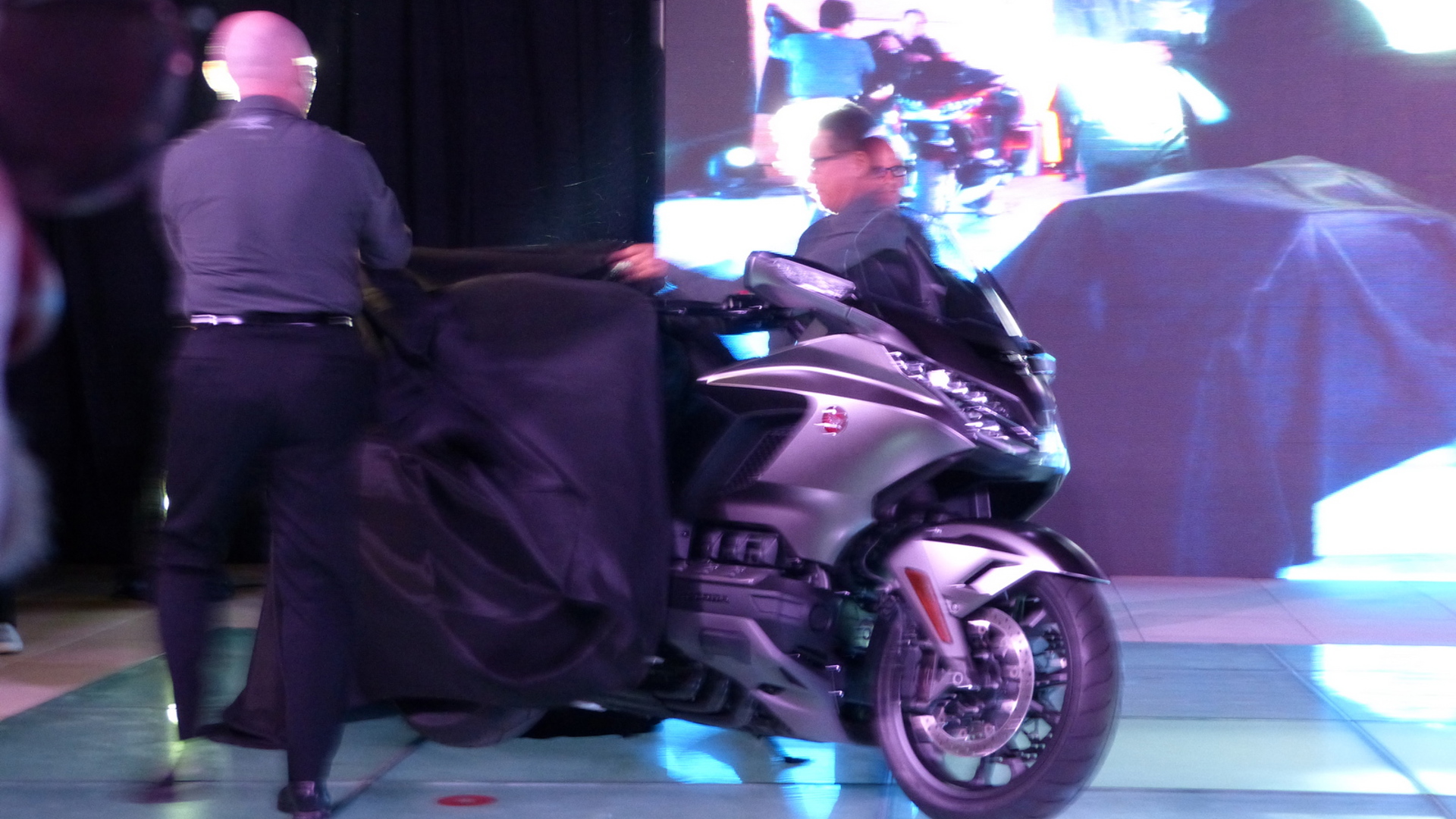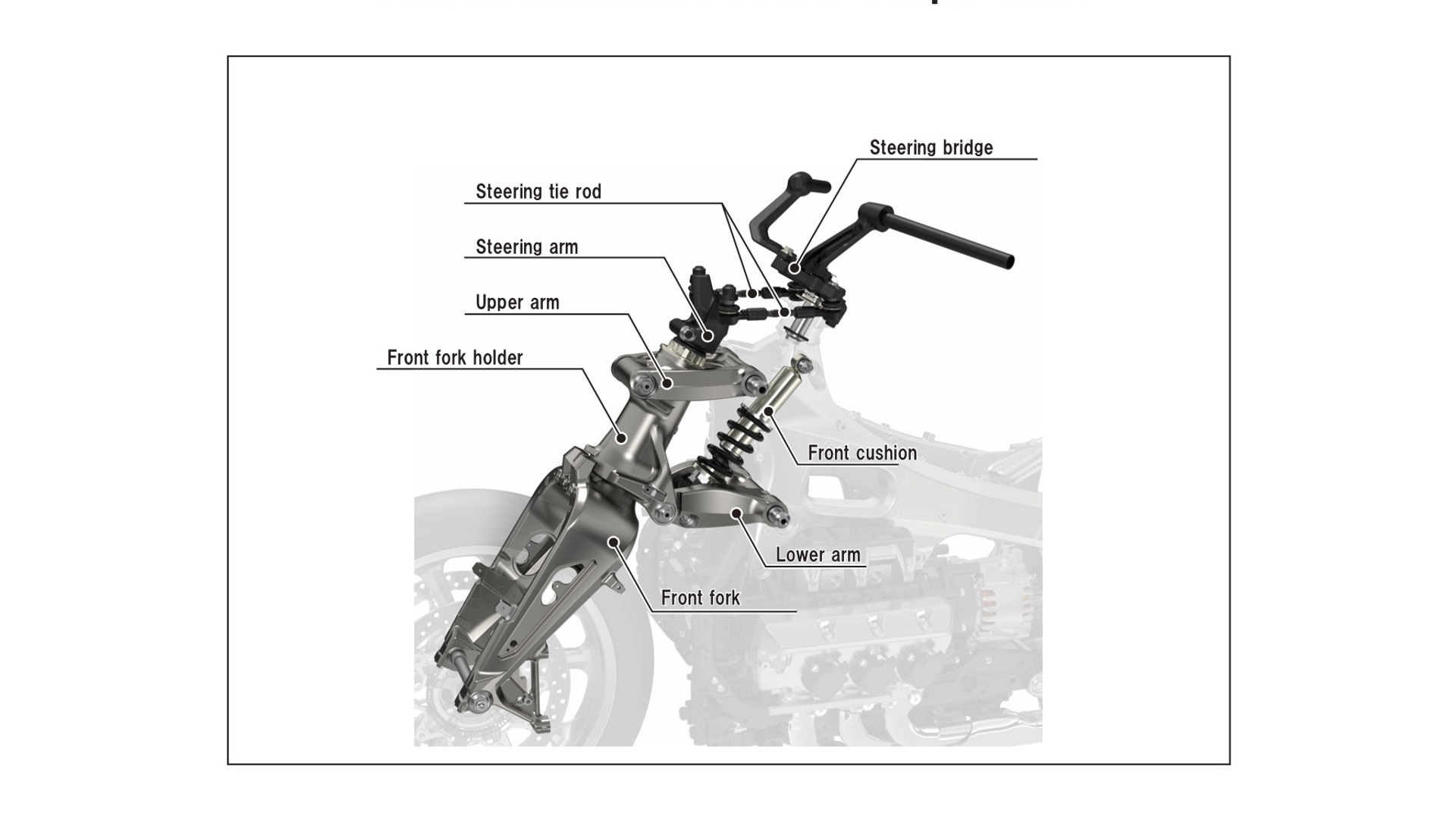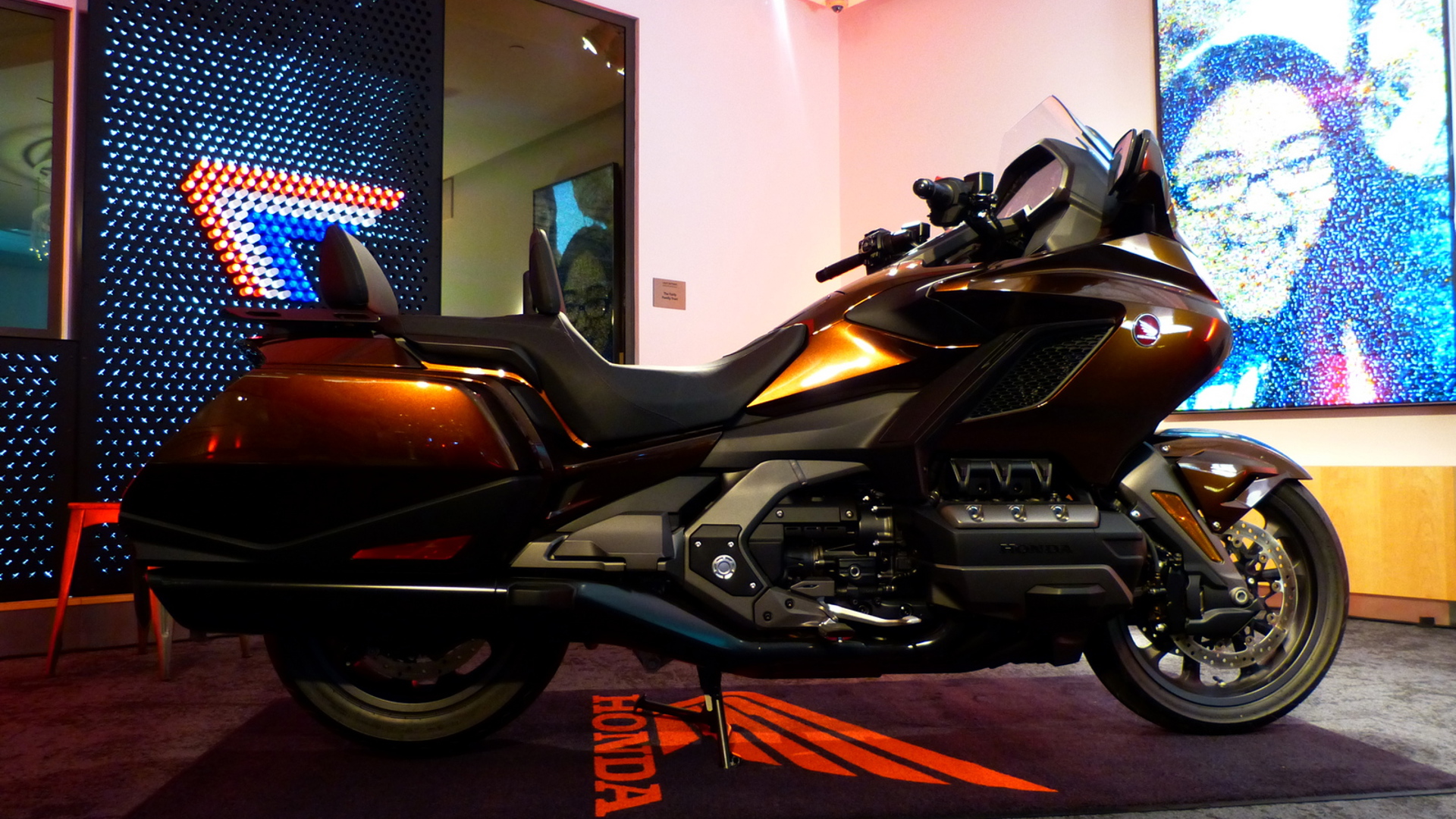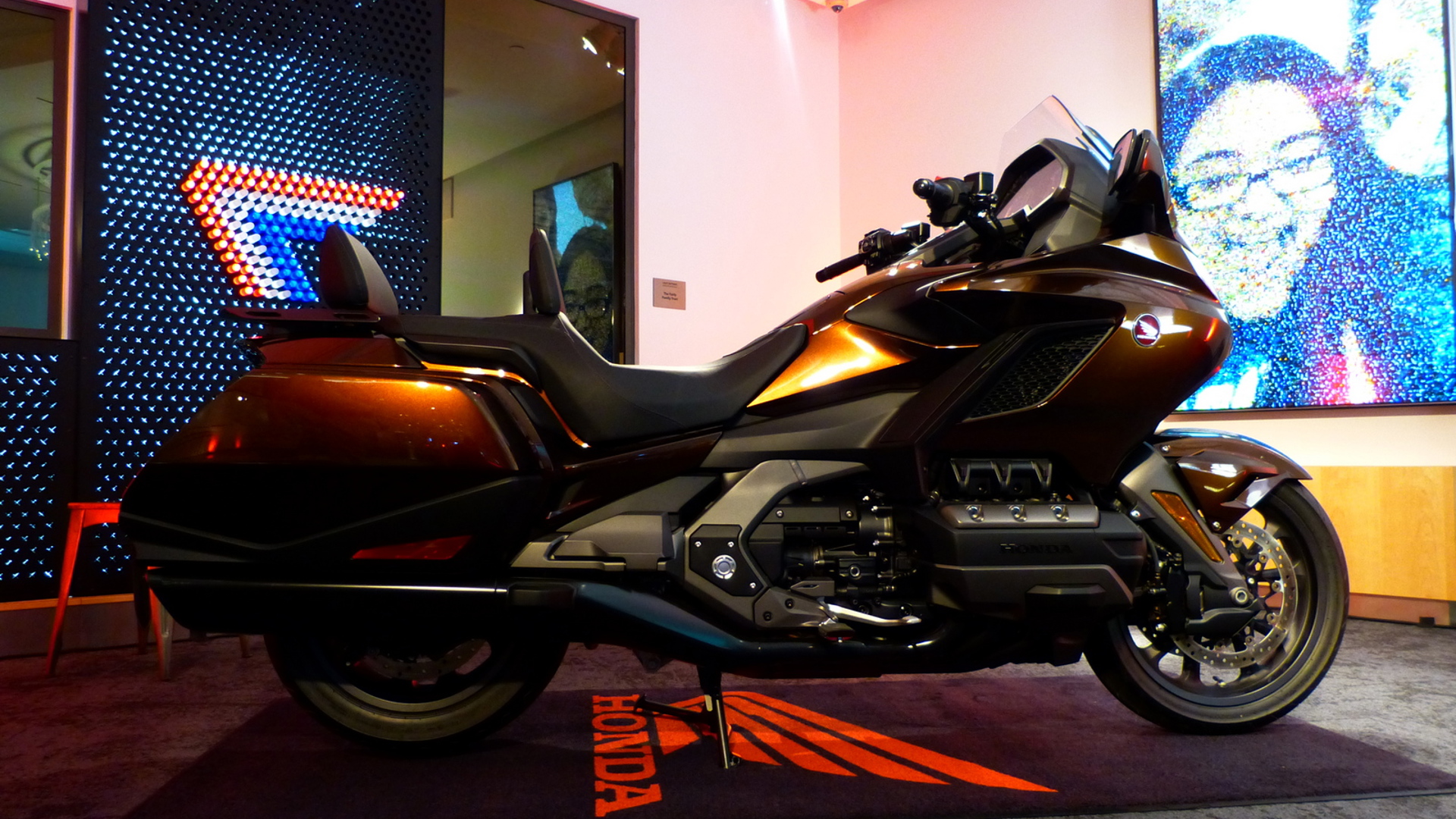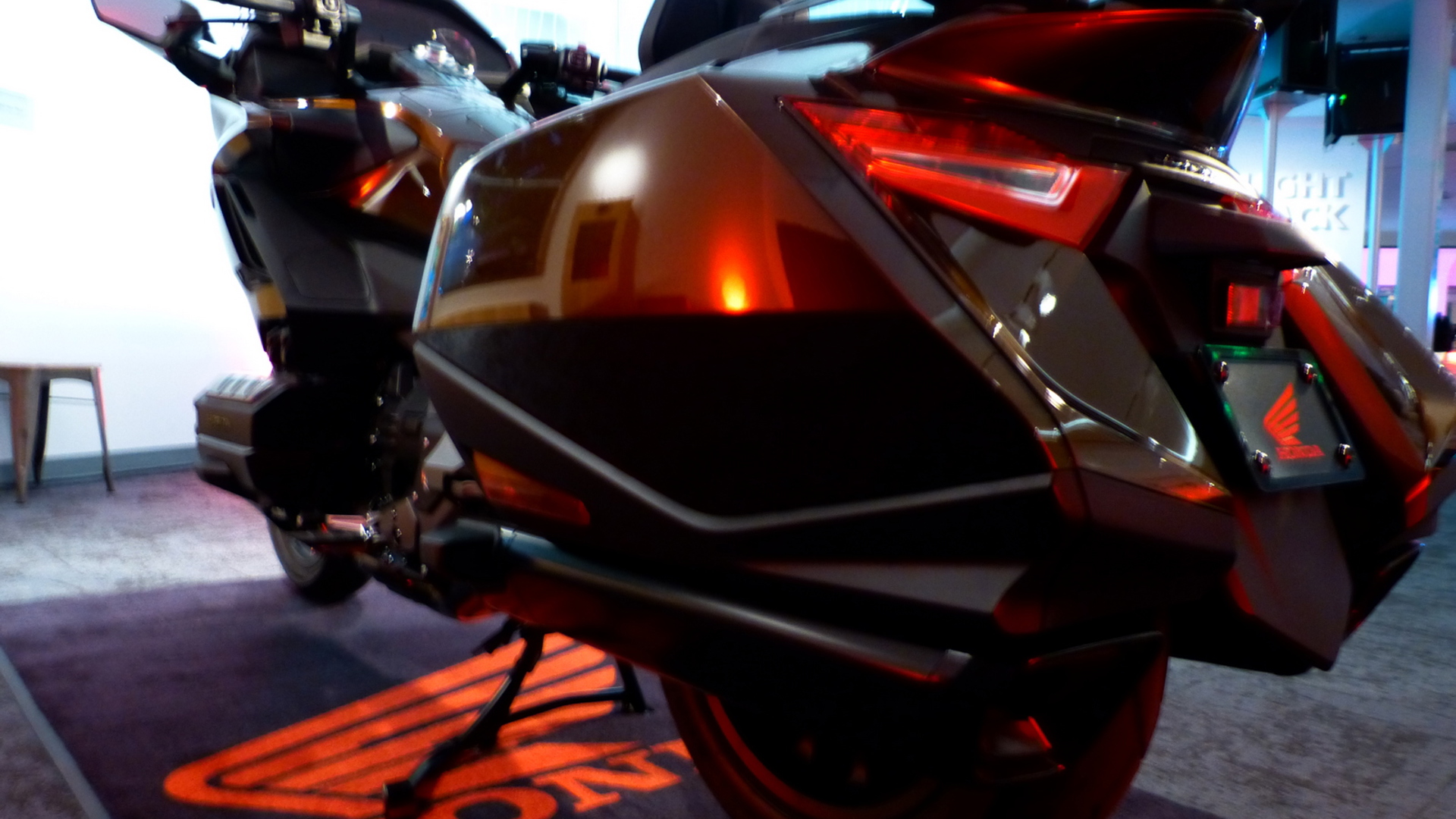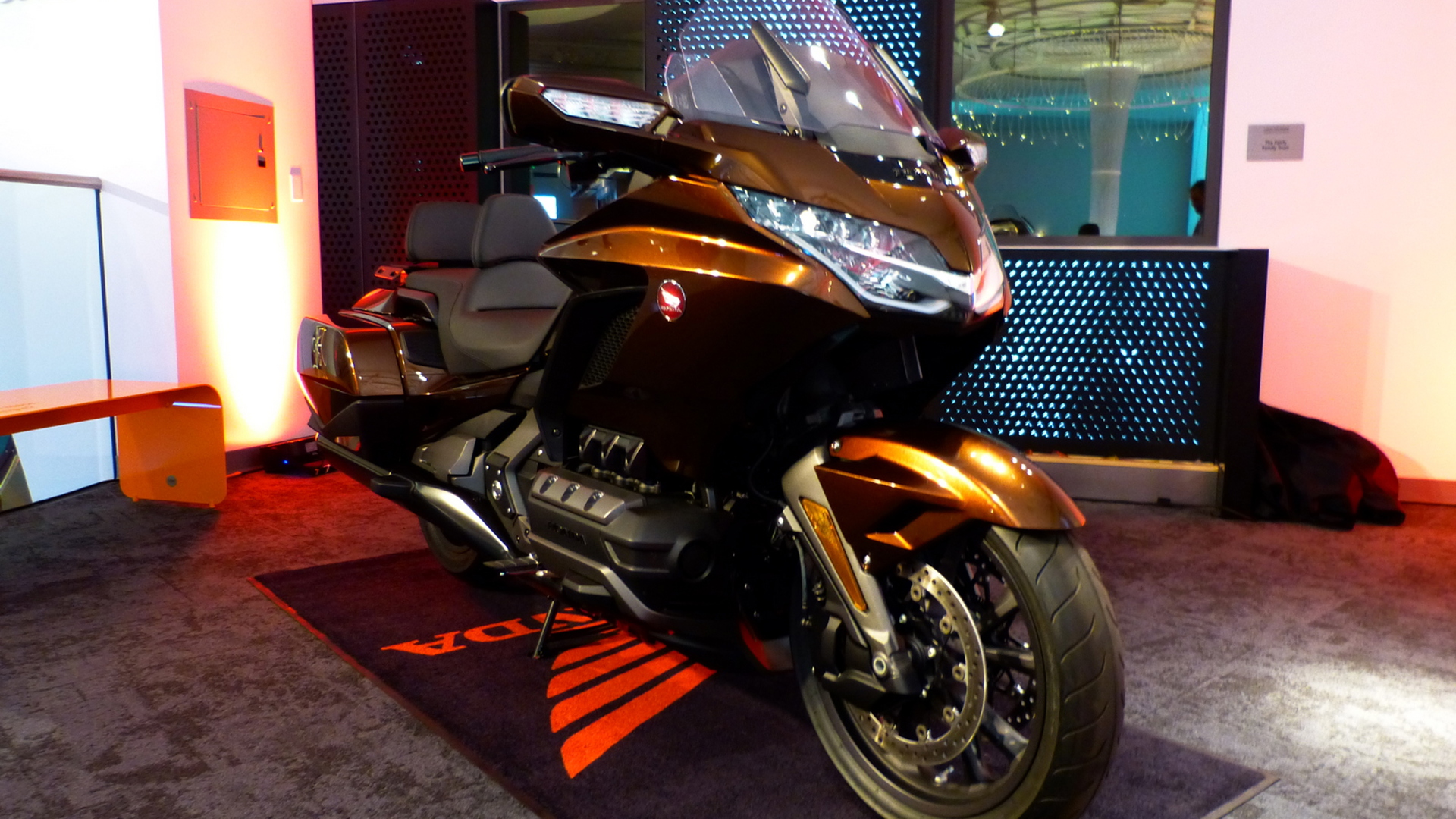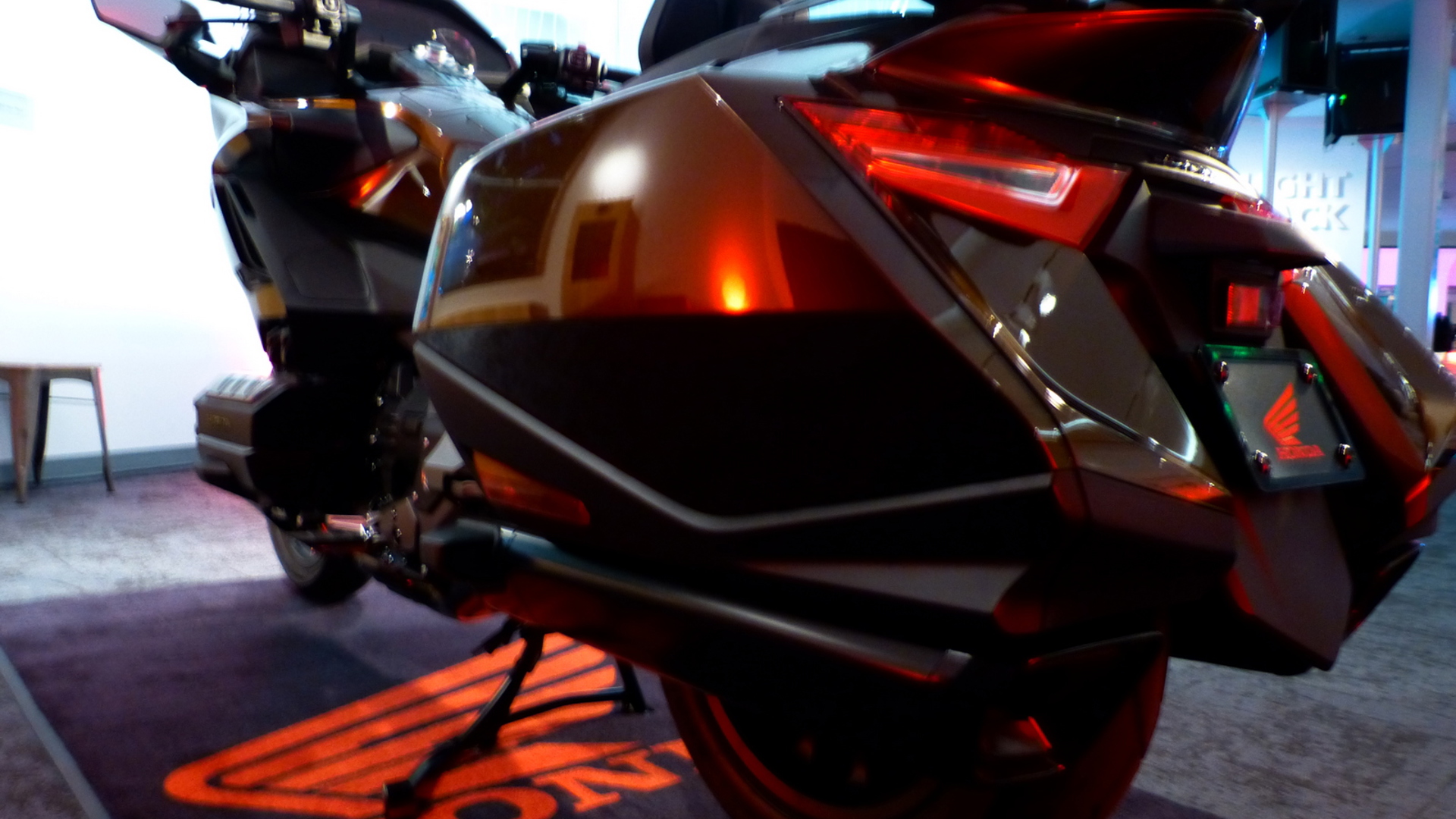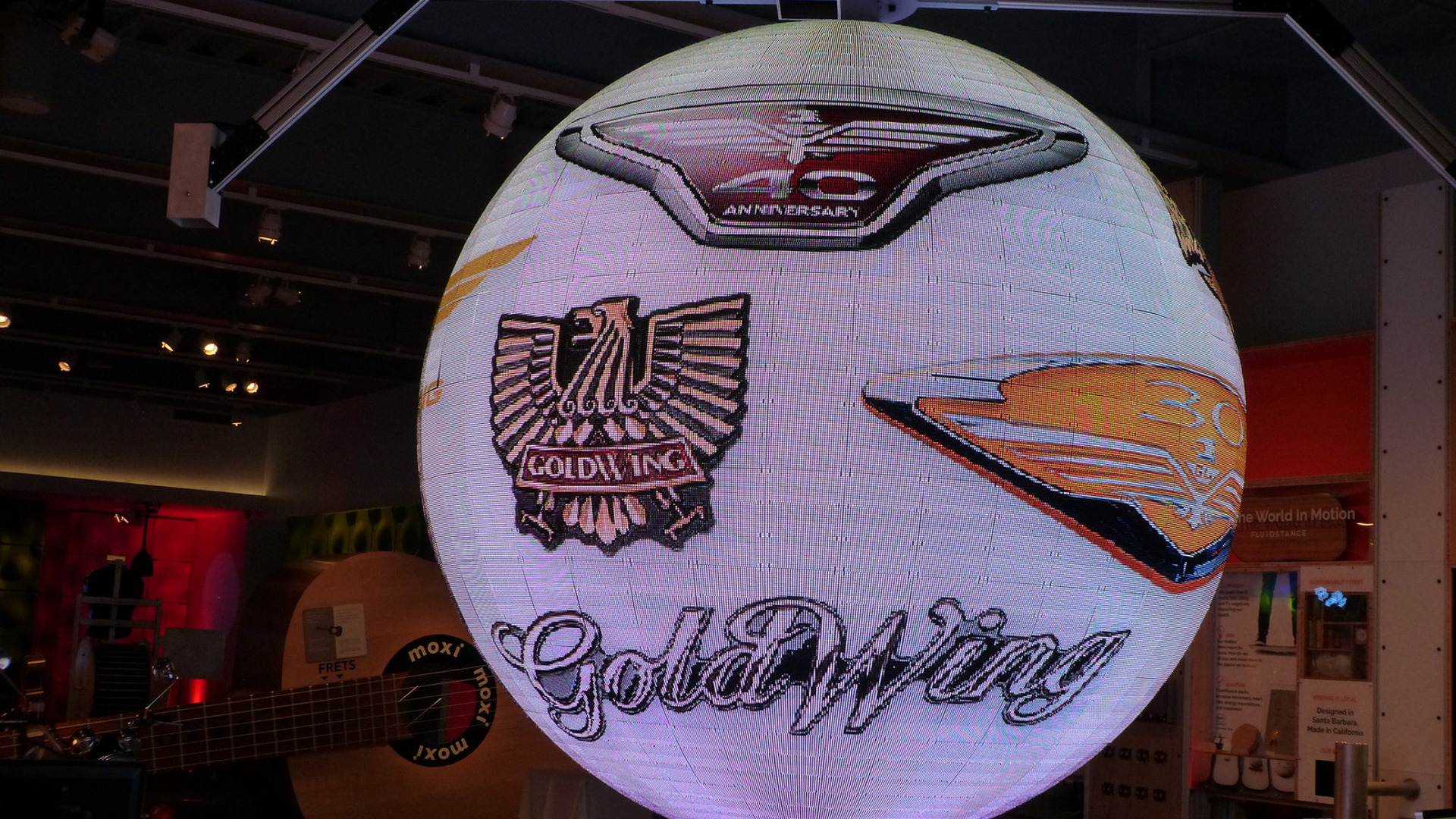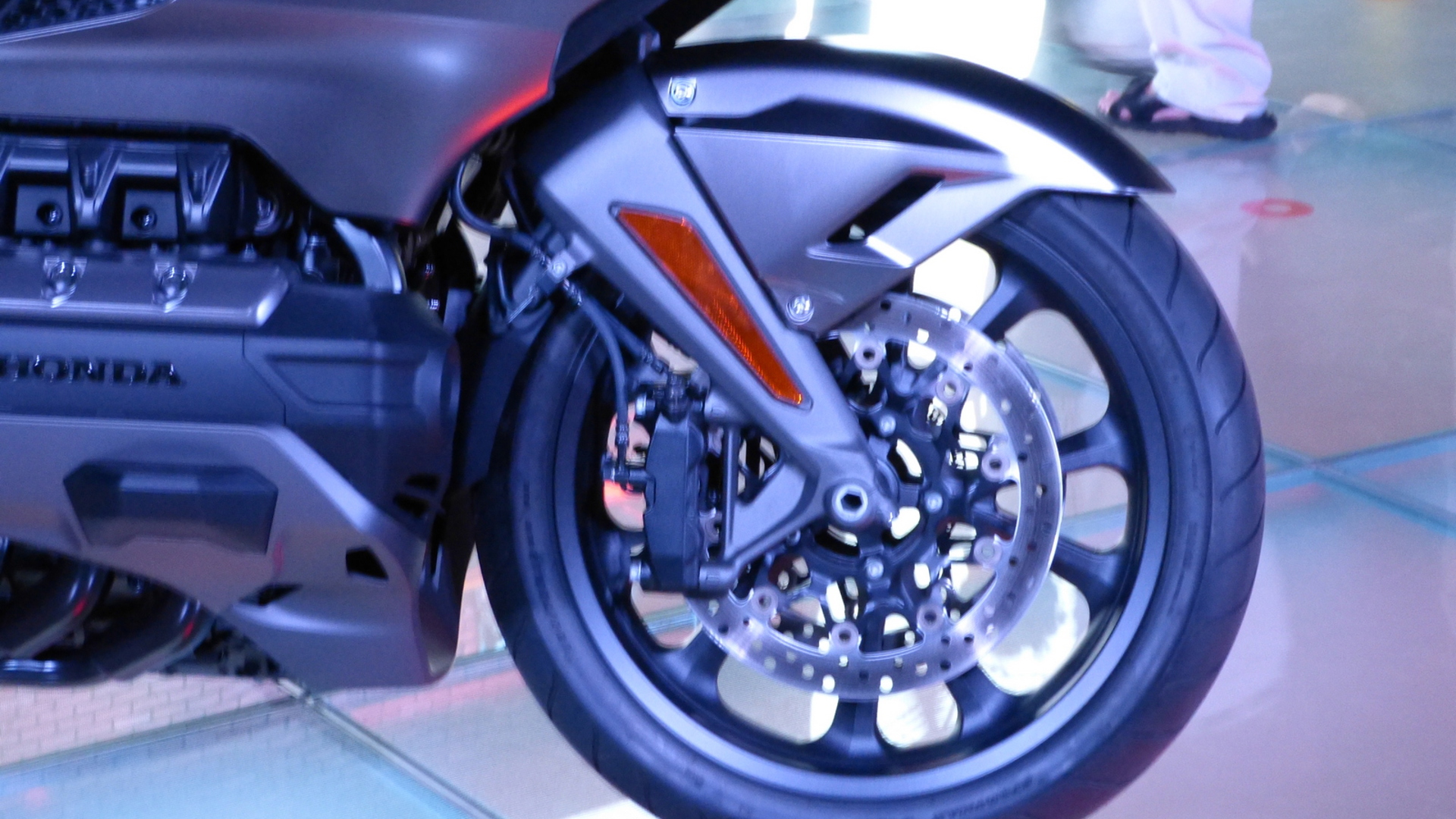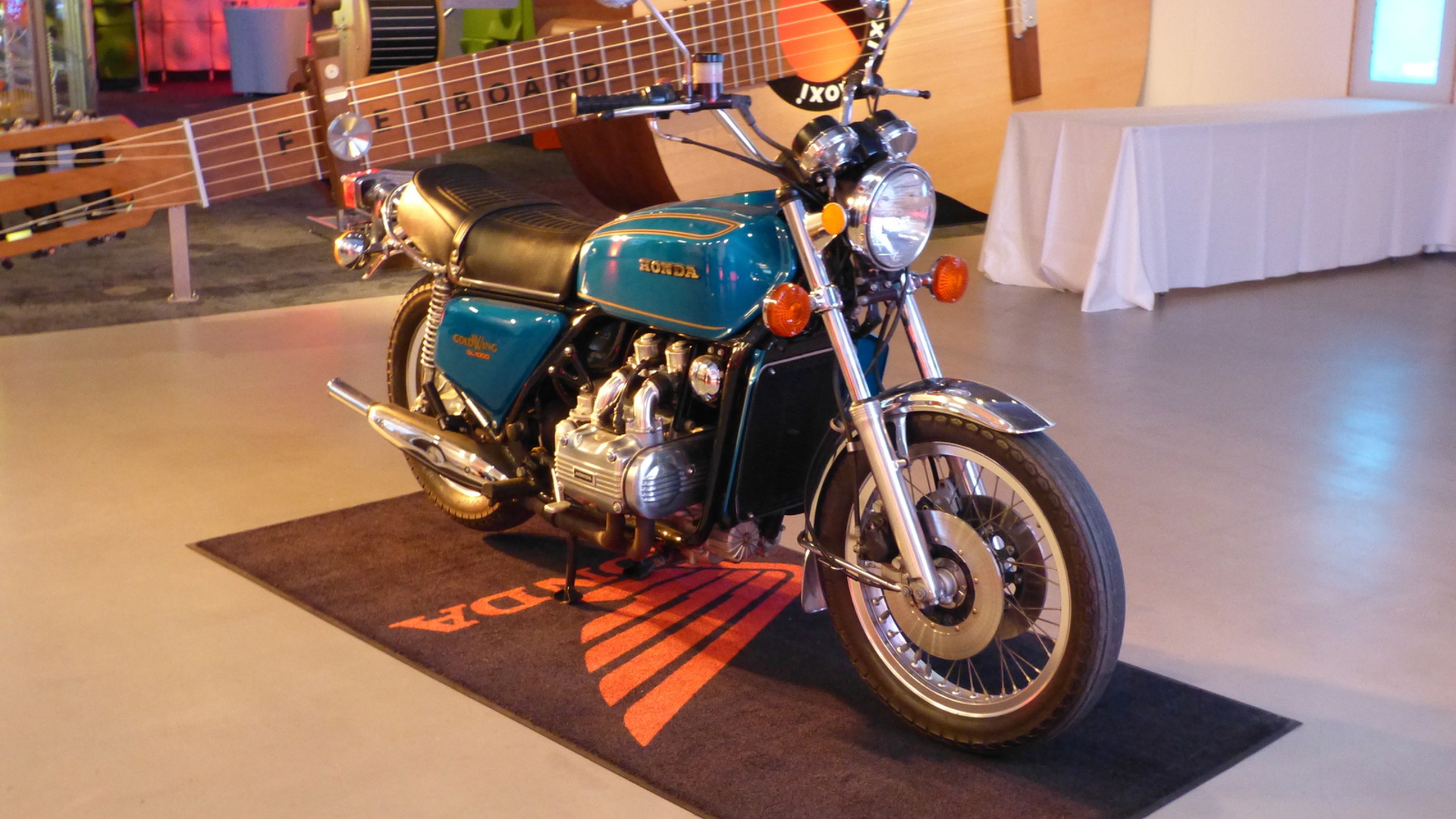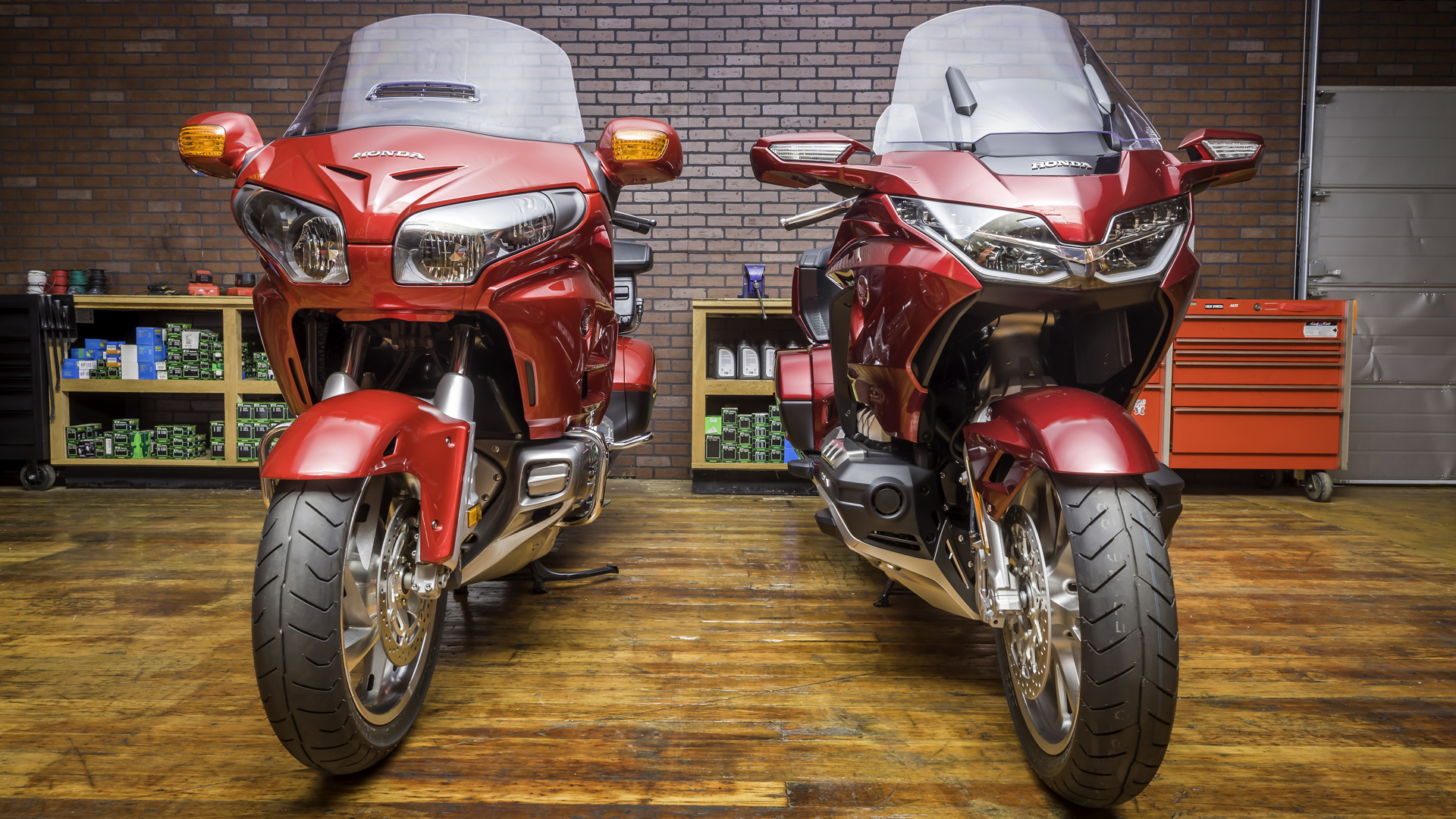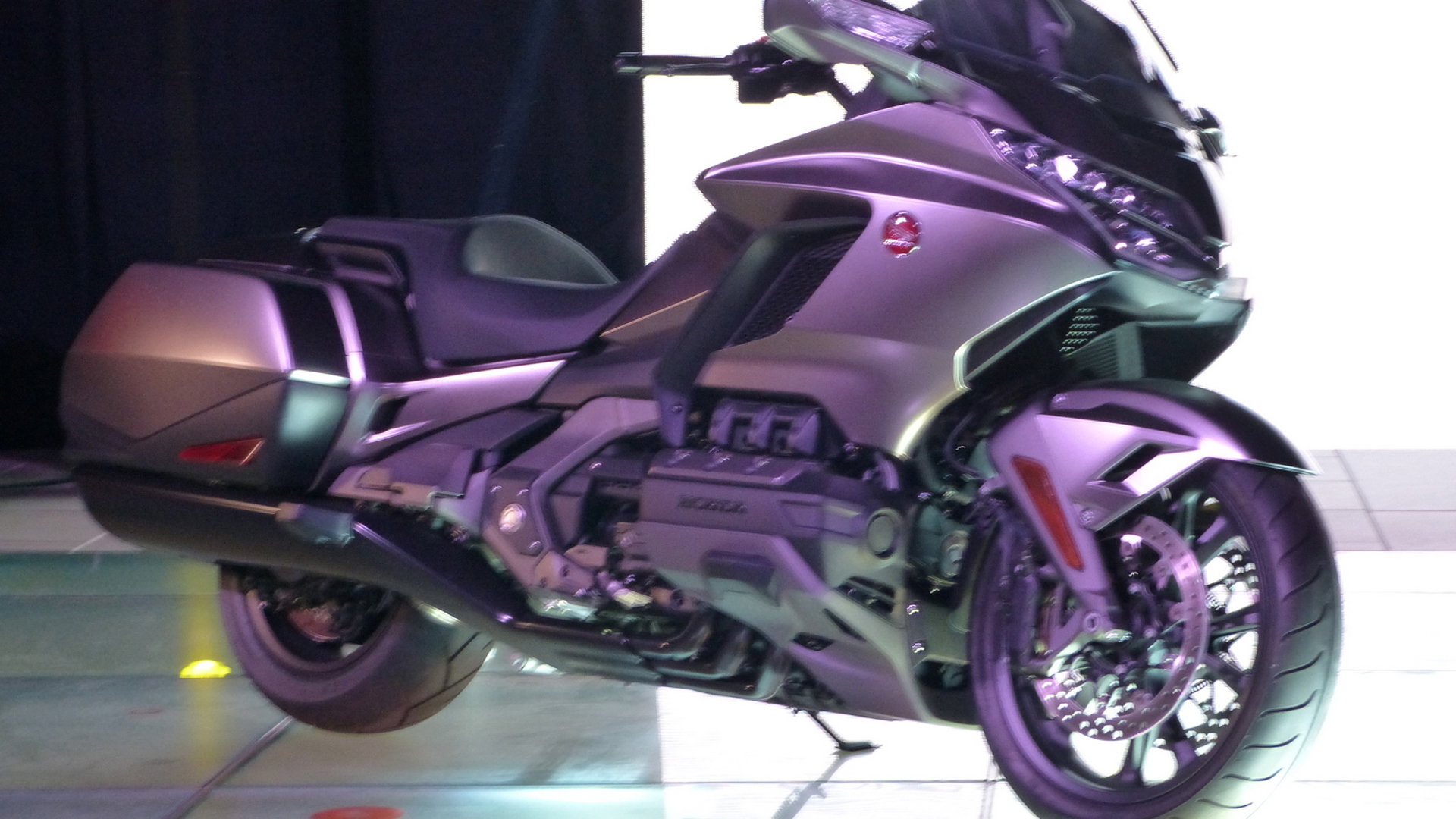The 2018 Honda Gold Wing is now here, and many of the rumours are true.
Honda’s iconic touring bike is around 40 kg lighter, visibly smaller, and boasts a trick new front suspension.
Starting at $26,999 in Canada, the 2018 Honda Gold Wing will get a Hossack-style front suspension that incorporates a double-wishbone with the shock absorber mounted in an offset from the forks.
This design reduces the amount of lateral wheel travel, and contributes to the Gold Wing’s more compact engine and frame layout. Courtesy of the reduced need for clearance between the front tire and engine case, and an engine that is in itself 29 mm shorter, the entire inline-six cylinder unit is mounted 36 mm further forward.
On Tour models, the suspension gets electric preload and damping adjustment.
The engine is made shorter thanks to a new integrated starter and generator that performs double functions. On start-up, it cranks the engine using battery power, and once running, the unit charges the battery. By removing the starter motor Honda saved 2.4 kg, and, along with moving the crank sensor to behind the crankshaft, allowed the engine to be packaged more compactly. One unintended benefit of this change is a much quieter engine startup – which was demonstrated at the launch. It also paves the way for the introduction of automatic engine start-stop technology in the future.
By using higher-strength alloys in the crankshaft, Honda was able to reduce its diameter and narrow the gap between the cylinder banks by nine mm (down to 81 mm), further contributing to the Gold Wing’s slimmer design. Honda went to a Unicam system, while also moving from two to four valves per cylinder. Similar to the system that debuted on the CRF450R the four valves are controlled by finger-follower rocker-arms on the intake side and a roller rocker-arm system on the exhaust side.
Sitting aboard the bike in both the rider and pillion seat, it’s obvious the rider now sits much further forward. Honda says they have aimed to make the passenger more a part of the riding experience and feel less like they’re sitting “in the back seat”. Revised fairings and wind protection vents some air through the cockpit, removing the sensation of a vacuum behind the windshield. That windshield is electric too and can be controlled with a button on the left-hand grip.
Unlabeled dyno charts supplied at launch show a minor increase in initial torque and peak torque, with a more substantial increase in peak horsepower. The redline is unchanged.
A fly-by-wire throttle allows for the Gold Wing to come with four engine modes: Tour, Econ, Sport, and Rain. On the second-tier Gold Wing Tour trims, the riding modes not only affect the level of throttle response and transmission mapping, but also adjust the intervention of the Honda Selectable Torque Control (HSTC). It will also adjust the damping settings, giving the Gold Wing a stiffer set up with less pitch and dive when in Sport mode.
Honda claims the new bike is 20 percent more efficient and says that efficiency saving allowed them to reduce the fuel tank capacity from 25 to 21 litres with no impact on range.
A third-generation seven-speed DCT is likely going to be the transmission of choice for Gold Wing owners, and it comes with reverse, plus a forward and backward walk control. That system allows the bike to move forward at 1.6 km/h or backward at 1.2. A six-speed manual (up from five) is also available.
Braking has been improved with the use of six-piston, radially mounted Nissin calipers on twin 320 mm discs up front, compared to the three-piston, 296 mm on the outgoing model. ABS is standard, and the Gold Wing now comes with Hill Start Assist for the first time.
At 357 kg for the base model through to 382 kg for the top-trim Airbag DCT, the Gold Wing is as much as 40 kg lighter than its predecessor. Vertical ground clearance is up five mm to 130 mm, but lean angle is unchanged. Curiously, the wheelbase has increased slightly to 1,695 mm.
Navigation comes standard, as does the 7.0-inch TFT display screen, and Honda has announced 10 years of free map updates for customers. The bike is also Apple Carplay compatible, though not yet equipped for Android Auto.
A smart key system allows the bike to be started without removing the key from your pocket and the key can be turned off, for those times you’re close enough to the bike for someone to accidentally-on-purpose start the bike and ride away.
Pricing: 2018 Honda Gold Wing
2018 Honda Gold Wing: $26,999
2018 Honda Gold Wing Tour: $30,799
2018 Honda Gold Wing Tour DCT: $31,999
2018 Honda Gold Wing Tour DCT Airbag: $34,599
